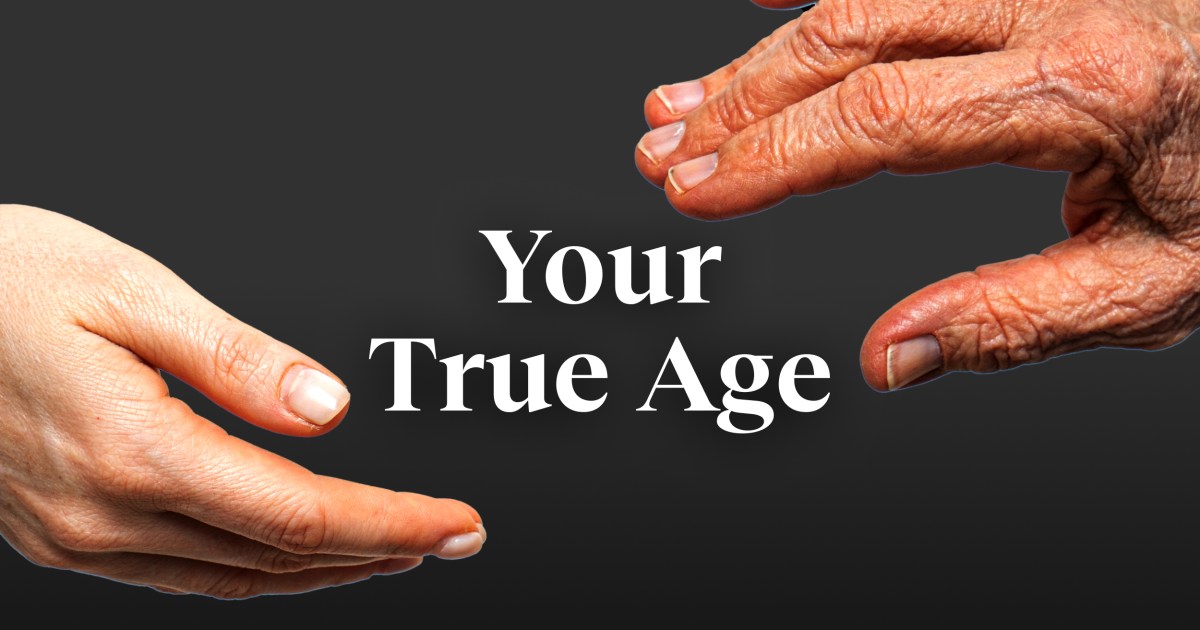Is Age Just A Number? Exploring The Social And Biological Realities

Table of Contents
The Social Construction of Age
Our understanding and experience of aging are profoundly shaped by societal expectations. The social perceptions of age influence how we view ourselves and how others perceive us as we age.
Societal Expectations and Age-Related Roles
Societal norms often dictate age-related roles and stereotypes. Retirement, for example, is frequently associated with decreased productivity and social relevance, though this is a societal construct that varies across cultures and historical periods. In some cultures, older adults hold positions of significant authority and respect, while in others, they may be relegated to the margins of society.
- Retirement age: The official retirement age varies significantly across countries, reflecting different social and economic realities.
- Caregiving roles: Societal expectations often place the burden of caregiving for elderly relatives on family members, particularly women.
- Generational differences: Differing life experiences and technological advancements contribute to generational divides and varying perceptions of age.
- Cultural influences on aging: Cultures with strong family ties and respect for elders often have more positive social perceptions of age than those that are more individualistic.
Ageism and its Impact
Ageism, the stereotyping and discrimination against individuals or groups based on their age, significantly impacts the well-being of older adults. It manifests in various forms, from subtle biases to overt discrimination in employment and healthcare. The consequences of ageism are far-reaching:
- Age discrimination: Older workers may face age discrimination in the workplace, leading to unemployment and financial hardship.
- Prejudice against the elderly: Negative stereotypes about cognitive decline or physical frailty can lead to social exclusion and reduced opportunities.
- Combating ageism: Promoting intergenerational activities, positive media portrayals of aging, and inclusive policies are crucial in combating ageism.
- Positive aging: Focusing on the strengths and contributions of older adults can foster a more positive and inclusive society.
The Biological Realities of Aging
While social perceptions of age are significant, the biological aging process is an undeniable reality. Our bodies undergo a series of physiological changes as we age.
Physiological Changes with Age
Biological aging involves a gradual decline in various physiological functions. These changes vary among individuals but generally include:
- Decreased muscle mass: Sarcopenia, the age-related loss of muscle mass and strength, affects physical function and independence.
- Reduced bone density: Osteoporosis, characterized by weakened bones, increases the risk of fractures and falls.
- Cognitive changes: While not inevitable, some cognitive decline can occur with age, potentially impacting memory and processing speed.
- Healthy aging: Lifestyle choices, such as regular exercise, a balanced diet, and cognitive stimulation, can significantly influence the aging process.
- Longevity: Factors like genetics, lifestyle, and access to healthcare play a crucial role in determining lifespan and healthspan.
Disease and Aging
The risk of developing chronic diseases increases significantly with age. Many age-related diseases, such as Alzheimer's disease, heart disease, and arthritis, are complex and influenced by a combination of genetic and environmental factors.
- Age-related diseases: Understanding the risk factors and early warning signs of age-related diseases is crucial for early intervention and management.
- Chronic illness: Effective management of chronic conditions is essential for maintaining quality of life in later years.
- Disease prevention: Lifestyle modifications, regular check-ups, and vaccination can help prevent or delay the onset of many age-related diseases.
- Health management in older adults: Access to quality healthcare and support services is vital for managing age-related health issues.
Reconciling the Social and Biological Aspects of Aging
Understanding aging requires a holistic approach that considers both the social and biological dimensions.
The Importance of a Holistic Approach to Aging
Promoting positive aging requires addressing both social and biological factors. This involves:
- Holistic aging: Recognizing the interconnectedness of physical, mental, and social well-being.
- Positive aging strategies: Encouraging healthy lifestyle choices, social engagement, and access to quality healthcare.
- Successful aging: Focusing on maintaining physical and cognitive function, engaging in meaningful activities, and fostering social connections.
- Well-being in older adults: Prioritizing the mental and emotional health of older adults is essential for promoting positive aging.
Challenging the "Age is Just a Number" Narrative
While the phrase "age is just a number" can be empowering in defying stereotypes, it's crucial to acknowledge the complexities of aging. It’s about finding a nuanced understanding of age and its implications:
- Age and identity: Age is a significant aspect of identity, influencing our experiences and opportunities.
- Redefining aging: We need to challenge negative stereotypes and embrace a more positive and inclusive view of aging.
- Accepting aging: Accepting the physical and cognitive changes that come with age allows us to focus on maximizing our well-being and quality of life.
Conclusion
While 'age is just a number' in some ways, understanding both the social and biological realities of aging is crucial. We've explored the significant impact of societal expectations and ageism, alongside the undeniable physiological changes and increased risk of age-related diseases. A holistic approach, focusing on both physical and mental health, social inclusion, and combating ageism, is essential for promoting healthy aging. Let's challenge ageist stereotypes and work towards a society that embraces and supports healthy aging for all. Learn more about [link to relevant resource] and contribute to a more positive understanding of aging.

Featured Posts
-
 Veteran Filmmaker Ted Kotcheff Known For Rambo First Blood Dead At 94
May 01, 2025
Veteran Filmmaker Ted Kotcheff Known For Rambo First Blood Dead At 94
May 01, 2025 -
 Louisville Restaurants Plea For Support During River Road Closure
May 01, 2025
Louisville Restaurants Plea For Support During River Road Closure
May 01, 2025 -
 Boxeo En Saltillo Impulsando La Transformacion A Traves Del Deporte
May 01, 2025
Boxeo En Saltillo Impulsando La Transformacion A Traves Del Deporte
May 01, 2025 -
 Remember Mondays Eurovision Song Transforming Online Toxicity Into A Musical Triumph
May 01, 2025
Remember Mondays Eurovision Song Transforming Online Toxicity Into A Musical Triumph
May 01, 2025 -
 Solutions Numeriques Pour Animer Vos Thes Dansants
May 01, 2025
Solutions Numeriques Pour Animer Vos Thes Dansants
May 01, 2025
